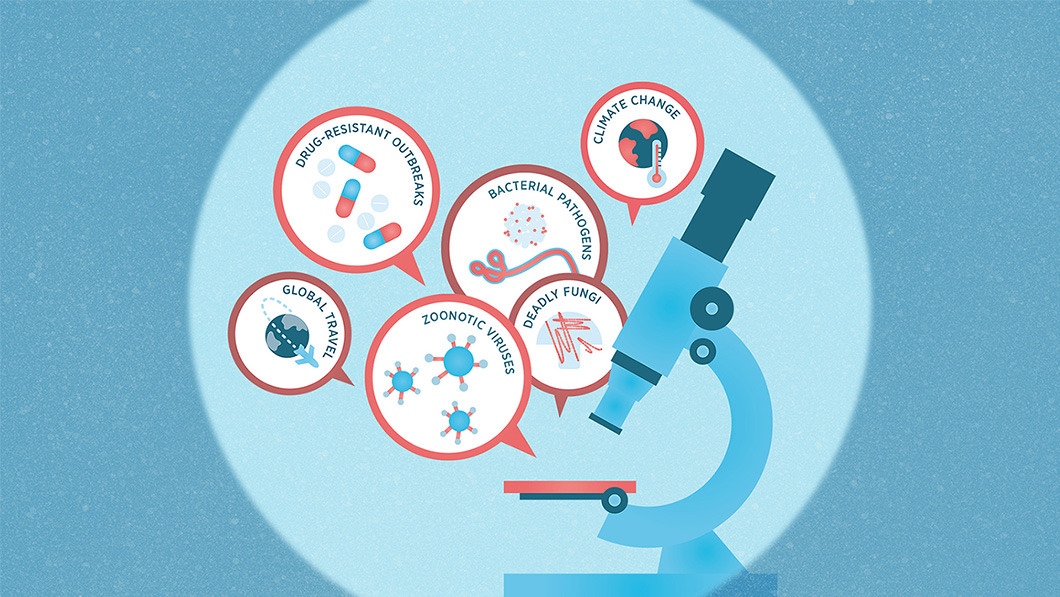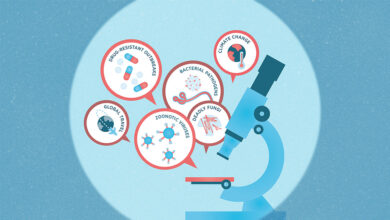
A new H5N1 case and a mosquito invasion
Sponsored by:

PPF: Health Security
PPF’s report The Next One: Preparing Canada for another health emergency outlines the lessons learned from the pandemic and how Canada can safeguard against future health emergencies. To keep the discussion going — and to keep Canadians informed — this newsletter looks at what’s happening in the world of health security each week. Here’s what we’re following:
Second human avian flu case
A farm worker in Michigan who had been exposed to dairy cows infected with H5N1 has tested positive for the virus, making them the second person in the U.S. to be infected with the strain linked to the current outbreak in cattle. The worker’s symptoms were reportedly mild and they recovered.
The announcement of the human case came on the heels of the news that, unsurprisingly, there will be no downtime for U.S. state and local health officials monitoring the flu over the summer. Typically, as the summer starts and flu season wanes, flu surveillance tapers off, but this year the Centers for Disease Control and Prevention is asking for constant vigilance as health officials seek further insight into the spread of H5N1 across the country.
Concerning as it is that H5N1 continues to pop up in dairy cattle in the U.S., “I would be a whole lot more concerned if this was an event in pigs,” Richard Webby, director of the WHO’s Collaborating Centre for Studies on the Ecology of Influenza in Animals and Birds, told The Atlantic. Sustained residency in pigs could allow H5N1 to evolve into something much more threatening to humans, in much the same way H1N1 hopped from birds to pigs and prompted 2009’s swine flu pandemic.
Meanwhile, in Canada this past week, what was to be a public briefing on Parliament Hill on the U.S. avian flu outbreak was, at the last minute, designated a private affair by participating MPs. However, as POLITICO reported, University of Saskatchewan virologist Angela Rasmussen said the meeting was “very collegial” and had helped MPs understand how Canadian government agencies and academics are monitoring the outbreak.
Canada’s vaccine bust
Four years after the federal government promised to build a plant in Montreal to create Canadian-made Novavax COVID-19 vaccines, not a single one has been produced at the facility. The Biologics Manufacturing Centre (BMC) — located on land owned by the National Research Council at the site of an old animal vaccines plant — cost Ottawa $130 million, and despite having received Health Canada clearance in July 2022, it has yet to produce any vaccines. The NRC is spending $17 million every year to keep the plant operational with about 100 staff on site and Novavax is still expected to use the plant, but the firm has already delayed that start three times.
The global demand for COVID-19 vaccines is plummeting. Earlier this month, AstraZeneca announced it is withdrawing its COVID-19 vaccine from the global market (though AstraZeneca’s vaccine, which caused concerns about possible side effects, is a unique example). Even more worrying for Canada’s investment is that Novavax, despite being approved by Health Canada as a viable COVID-19 vaccine, has had relatively little uptake. As of February, just over 37,000 Novavax vaccines had been administered in Canada, compared to more than 70 million of the Pfizer doses and roughly 33 million Moderna shots, according to the Public Health Agency of Canada.
Pandemic disaccord
Nations deliberating a global pandemic accord failed to reach consensus ahead of the World Health Assembly meetings in Geneva this week. Despite some late-stage hope that there might be agreement on the accord — and that it could be adopted this week — the discussions will continue at a later date. The treaty would have established legally binding policies for WHO-member countries on sharing data and information on pathogens and, most contentiously, sharing vaccines and medicines during international health emergencies.
Despite failing to meet its deadline, the tone from some negotiators remains optimistic that an accord will be established — eventually. “I know we are all disappointed that we don’t have a dance and champagne in the room today… This is hard, but I will certainly continue to believe in multilateral solutions and I know that everyone in this room is committed as well,” Pamela Hamamoto, the lead negotiator for the U.S., said. But it’s American domestic politics that are prompting some to worry about any delay.
“Donald Trump is in the room,” Lawrence Gostin, director of the WHO Center on Global Health Law, who has helped to draft and negotiate the treaty, told The New York Times. “If Trump is elected, he will likely torpedo the negotiations and even withdraw from WHO,” Gostin said.
AMR funding stall
With U.K. Prime Minister Rishi Sunak calling an early election, some of the government’s health security funding commitments will stall, including a government commitment made earlier this month to dedicate £85 million to fighting antimicrobial resistance (AMR).
While we wait for the outcome of that election, in Canada the government has announced nearly $900,000 in funding via the Public Health Agency of Canada over the next three years to support the development and dissemination of new national guidelines for the prescription of antimicrobial medications. The guidelines will “be a key tool in ensuring the appropriate and responsible use of antibiotics for humans and contribute to the overall fight against AMR,” Mark Holland, the federal health minister, said.
AMR is considered one of the world’s biggest public health threats, and was directly responsible for 1.27 million deaths in 2019.
Mosquito invasion
Cases of Lyme disease in Canada have increased more than 1,000 percent in a decade. Populations of mosquitos that could carry illnesses like dengue and yellow fever are now in parts of Ontario. Both are a result of a warming climate that has pushed boundaries for pathogens northward, reports the Canadian Press.
In 2021 there were 3,147 reported cases of Lyme disease in Canada. That’s up from just 266 in 2011, according to a federal report. “This [increase] occurred in part due to changes in climate, which has contributed to increases in the abundance and geographic range of black-legged tick populations in central and Eastern Canada,” noted the report.
The WHO, meanwhile, released a new report that says research is urgently needed on the impact of climate change on neglected tropical diseases (like dengue and chikungunya) and malaria.
“Rising temperatures and changing weather patterns are altering the spread of vector-borne diseases, with significant implications for human health and placing additional strain on systems. As the geographic range of disease vectors like mosquitoes expands, so does the risk of introducing — or reintroducing — these diseases to new, unprepared areas,” notes a WHO press release about the report.
Events
June
- June 3-6: Bio International Convention. San Diego, CA.
- June 12-13: The Festival of Genomics & Biodata. Boston, MA
- June 13-14: International Conference on Food Science and Biotechnology. Montreal, QC.
- June 20-21: 7th Annual Next-Gen Immuno-Oncology Conference. Boston, MA.
- June 26-28: BioPharma Expo. Tokyo, Japan.
- June 30-July 3: European Congress on Biosecurity. Rotterdam, Netherlands.
July
- July 24-28: Bio Asia Taiwan. Taipei, Taiwan.
Did someone forward you this newsletter? Subscribe to PPF: Health Security newsletter
This newsletter is produced by journalists at PPF Media. It maintains complete editorial independence.



